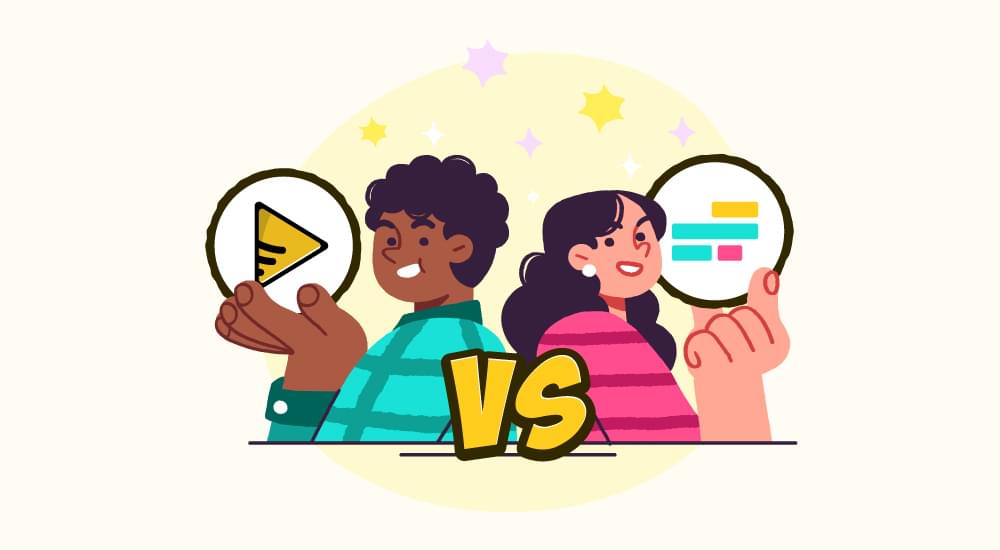
benefits of subtitles in video
7 Best Teaching strategies for Children with Autism or Autism Spectrum Disorder
Teaching autistic children comprises of some strategies to enhance learning and communication. The most important thing to know about teaching autistic children is that they are not, in fact, all the same. This can be difficult for teachers who are looking for one specific strategy to work across the board. But what works best depends on each individual student’s needs and personality.
A teacher has to learn how to identify these differences and come up with an approach suited just for them! There is no “one size fits all” when it comes to teaching autistic children - this blog post will show you strategies that have worked well in classrooms before, but remember: every child is different so try out a few until you find one that really clicks!
7 Best Teaching strategies for teaching children with Autism or Autism Spectrum Disorder
Enlisted are some of the best autism teaching strategies for children or students are :
1. Task Analysis & Breaking Down Tasks Into Steps
Task analysis is used to break down tasks so they are easier for an individual to understand and follow. Breaking down tasks can help individuals with autism remain focused on the step they need to complete at a given time, therefore improving attention spans.
Additionally this helps with organization skills when teaching autism child at home and independent functioning skills i.e.: cooking
2. Picture Schedules & Take Home Charts
A picture schedule can be made using pictures of common activities in the child’s daily routine such as: getting dressed, brushing teeth, packing books into backpack etc.
These can be laminated or put into plastic sleeves and hung up in prominent areas such as around their bedroom door or above their bed (for pre-school children) for easy reference.
3. Social Stories
A social story contains specific information about what is socially appropriate behaviour as well as reasons why certain behaviours may not be acceptable i.e. brushing your teeth before dinner because you don’t want food stuck in your teeth during dinner time .
4. Visual Supports & Visual Schedule
Visual cues can be used with students who are non-verbal or with poor speech/communication skills so they can effectively communicate their wants and needs i.e. a visual cue card made with a picture of an apple followed by EAT under it to show that individual where the “apple” is located in the grocery store
Visual supports are visual cues or prompts that assist students in understanding expectations or instructions.
- Use brightly coloured visuals for high contrast levels that are more appealing to the eye
- Use symbols instead of words wherever possible (i.e.: smiley faces or pictures of objects)
- Use symbols in combination with words when visualizing tasks/concepts i.e.: use a picture of an apple followed by EAT under it so they can find out where the “apple” is located in the grocery store
5. Social Skills Groups & Social Skills Lessons
Social skills groups help students learn how to interact more successfully in group settings i.e.: socializing with classmates during recess at school or on the playground.
These sessions also give individuals with autism opportunities for role playing and practicing what they have learned before trying them out socially provided that some form of reinforcement is offered such as a favorite activity after they complete it successfully.
6. Subtitles and Captions In Television and Children Language Development

The importance of subtitles or captioning cannot be overlooked while considering teaching strategies for students with autism. Students with autism are often unable to process the content of a classroom, but captions can help them focus and understand what’s going on.
Television shows and movies with subtitles and/or captions on display can help use subtitles to learn a foreign language and allow the child to watch their favorite show but also be taught new words and different ways to say things i.e. instead of saying “I want it” a child can learn that they need to say “May I have it please?”
The importance of subtitles or captions is often overlooked, but it’s paramount to use of television and children language development.
Captions shows visual cues, identifying what’s being said in addition to identifying other sounds e.g. birds chirping or car tires screeching. They can be a great way for teachers who are teaching students with Autistic Spectrum Disorder (ASD) or other disabilities.
Teaching these kids in captioned video formats will help them process information better, focus more easily on instruction when it’s spoken rather than just read from screens because they’re not used to seeing text except as part of the curriculum materials themselves.
It also helps decrease confusion by providing subtitles which may make up part-of what we say during class discussions - this brings ease understanding since there won’t always need facial expressions communicated through body language alone!
7. Social Skills Journals & Explaining Feelings In The Moment
Social skills journals track social behaviors for children who may not naturally display them. By keeping track of these experiences it provides opportunities for role playing activities in which the student is able to see what they did well and how they can improve next time.
When feelings are explained in the moment it helps students who have difficulty reading social cues recognize the feelings of others.
What are the major characteristics of Autism?
Autism Spectrum Disorder (ASD) is a complex developmental disability that affects the way people communicate and interact with others. It generally appears during the first three years of life.
Some of the Major characteristics of autism include
- sensory issues
- lack or low quality speech/communication
- trouble staying focused on an object or task for extended periods of time such as playing with Lego’s or coloring in a book for more than 15 minutes at a time.
Resources for parents, educators, and individuals in teaching autistic children
Major resources for parents or anyone educating students or children with autism are :
- Emotion cards are a great way for students with autism to identify different emotions. Shuffle the pack and go through each card, asking your child if they can recognize what emotion is shown without looking at it. They are one of the best autism teaching methods recommended by doctors!
- Board games with a twist are an excellent way for teaching autistic children manners and demonstrate the importance of being polite. In addition, this simple but effective activity puts a twist on some classic board game varieties by requiring players before they start playing. Teaching methods for autistic child differs largely from those with no autism or any mental health issues, which is why approaches used in a mental health private practice can often offer valuable strategies.
- Captioned videos or TV programs: With or without hearing difficulty, all of us miss words from time to time and it can be especially frustrating for anyone who has an autism spectrum disorder (ASD) because they need complete information. By using auto subtitle generators like SubtitleBee, you can add subtitles for 100+ languages to videos and use them as a teaching strategy for students with autism.
Conclusion
As you can see, there is no one strategy that will work for every autistic child. The most important thing to know about teaching autistic children is that they are not, in fact, all the same and what works best depends on each individual student’s needs and personality.
Teachers are often looking for one specific strategy to work across the board. But what works best can differ student by student. This blog post should give you some ideas, but remember that an effective approach is different for every child!Teaching autistic children comprises of some strategies to enhance learning and communication. The most important thing to know about teaching autistic children is that they are not, in fact, all the same. This can be difficult for teachers who are looking for one specific strategy to work across the board. But what works best depends on each individual student’s needs and personality.
Add and translate your subtitles to more than 100 languages with high accuracy












